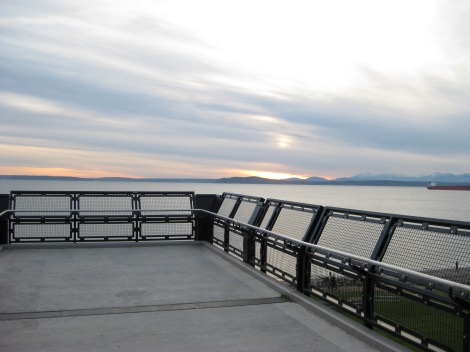There is an elusive factor frequently missing from the literature on the effects of bicycling and walking and how they impact health. It is rarely discussed because it is difficult to measure. It is the level of added enjoyment and delight one can receive when self-propelling oneself to a destination. Sometimes it is the satisfaction of not using a petroleum-propelled vehicle. Sometimes it is the extra time outside in the sun. Other times it might just be the added stimulation and circulation from moving your body and your legs instead of siting in a vehicle. Or maybe it is the breeze in your face while you enjoy a longer gaze at a mountain view.
In any case, it is becoming difficult to argue the more physical and tangible health benefits and how they can be integrated into everyday life. “Utilitarian cycling provides a practical means for inactive people to be active for thirty minutes per day…[utilitarian cycling] is likely to be a more regular or habitual form of physical activity than gym-based or recreational cycling.” (Pucher et. al., 2012)
Ironically, in countries that have more developed bicycle infrastructure, the main reason people cite for riding their bicycle to commute is convenience and speed. “Speed advantages of cycling, rather than health, fitness, or environmental reasons, are an important motivator for cyclists.” (Pucher et al., 2012) However, it is important to understand that all cities in the U.S. have a long way to go before the networks are developed to the extend of cities like Copenhagen or Amsterdam.
Imagine how powerful a combination efficiency and delight can be as we grow our bicycle facilities into a network of safe choices for riders of all ages and abilities. This growth can occur simultaneously with better pedestrian facilities for linking shorter trips or connections to transit. One way to enhance delight and safety is by creating multi-functional vegetated areas that create separation from traffic. The Indianapolis Cultural Trail is one example of a pedestrian and bicycle facility that separates and delights users by incorporating green stormwater infrastructure or bio-retention cells that have vegetation and manage stormwater runoff. By providing routes and alternatives that are both fast and enjoyable, we can create infrastructure that begins to change behavior.
Perhaps the delight from active transportation is more related to the mental health benefits. “The psychological health benefits of cycling range from preventing and treating anxiety and depression to improving cognitive functioning and increasing subjective well-being.” (Pucher et al., 2012) Bicycle commuters are also more likely to report that their trip to work was pleasant, interesting or exciting. (Pucher et al., 2012) These benefits have additional implications towards potential improved learning for children who walk and ride to school, or increased productivity for adult commuters opting for active transportation.
The research on health and active transportation continues to grow and further quantify the more concrete benefits. A 2011 study documented the cost benefit analysis of investments in bicycle infrastructure and their effects on health care costs in Portland, OR.
“By 2040, investments in the range of $138 to $605 million will result in health care cost savings of $388 to $594 million, fuel savings of $143 to $218 million, and savings in value of statistical lives of $7 to $12 billion. The benefit-cost ratios for health care and fuel savings are between 3.8 and 1.2 to 1, and an order of magnitude larger when value of statistical lives is used.” (Gotschi, 2011)
This is the first study of its kind to project the dollar value of investments in bicycle infrastructure, specifically related to health care.
Moving forward, cities in the U.S. should continue to factor, and even quantify, the less obvious benefits and incentives related to active transportation. The influence of activity; that is healthy, delightful and efficient, and how it can alter our behavior should not be underestimated. It may be one of the key elements that contribute to our urban quality of life.
Sources:
Gotschi, Thomas. 2011. “Costs and Benefits of Bicycling Investments in Portland, Oregon.“ Journal of Physical Activity and Health, 2011, 8(Suppl 1), S49-S58.
Pucher, John R., and Ralph Buehler. 2012. City Cycling. Cambridge, Mass: MIT Press.



Reblogged this on urbdp598 and commented:
My most recent post on “The Hidden Benefits of Active Transportation”